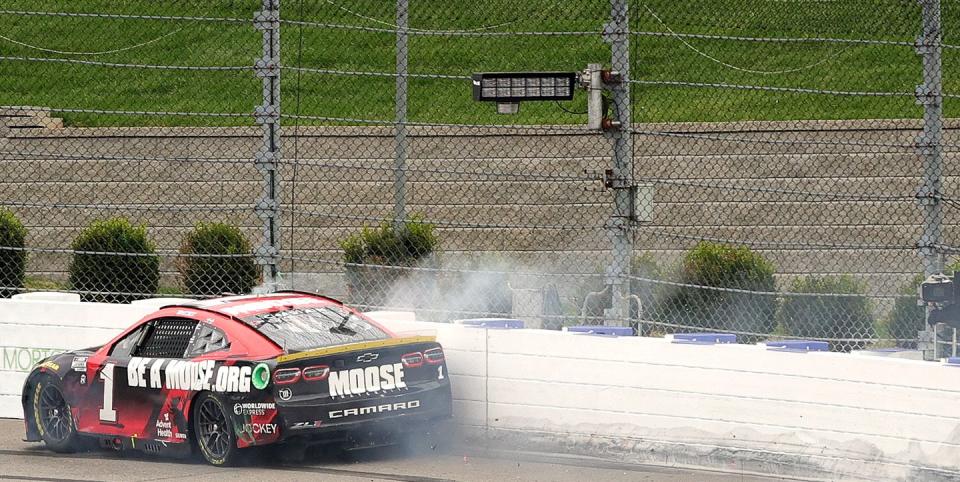Ross Chastain's NASCAR Wall Ride Should Be Immortalized, But Not Repeated

Ross Chastain on Sunday pulled off the most exciting pass since Alex Zanardi's famous move at the Corkscrew. Needing two spots in one corner to advance and have a shot at a championship, Chastain kept his foot down and slammed into the outside wall at Martinsville to make up four places. It was electric, the best and most memorable moment in a NASCAR race in years, so memorable that it played to Americans in between halves of the NFL's prime-time Sunday matchups. It also opened up a can of worms that will be difficult to close back up.
UNBELIEVABLE!@RossChastain floors it along the wall to go from 10th to 5th and advance to the CHAMPIONSHIP! #NASCARPlayoffs pic.twitter.com/9qX3eq7T6h
— NASCAR on NBC (@NASCARonNBC) October 30, 2022
The concept of wall riding is not new, as anyone who has played racing video games could tell you. It has been tried in NASCAR races in the past on a few occasions, most famously when Carl Edwards tried it at Kansas in 2008 and when Kyle Larson attempted the same thing at Darlington last year. The crucial difference is that, in both cases, the move did not actually work. At the time, it seemed that the physics at play in a real wall ride situation simply did not work out in the driver's favor.
Chastain's move, however, worked better than anyone could have imagined. Sure, he successfully destroyed the right side of his car, but just by riding the wall in those final two corners he set a lap time of 18.8, a full second faster than the weekend's pole time and about two seconds up on race pace the lap before. That means there's something here.
What exactly worked is still unclear. Is it Martinsville's flat corners? Is it the sheer difference between corner speeds at apex and straightaway speeds in comparison to faster tracks? Does the construction of the Next Gen car change the game on moves like these? That's the question teams have a week to answer. And, now that the move is on tape, teams can study that. They can study throttle, steering, and GPS tracking data too, giving each team on the grid the tools they need to figure out exactly what Chastain did.
A significant part of auto racing is finding those unfair advantages, the things that give a driver or team a significant and repeatable boost. Chastain's move was so effective that wall riding has suddenly gone from every driver's favorite widely discredited desperation play to something that needs to be taken into account going forward. If a team can crack what exactly went right here, the logical conclusion is that they would have to do it at the end of every single race where it could apply or risk losing as many spots as Chastain gained today on every last lap.

 Yahoo Autos
Yahoo Autos 